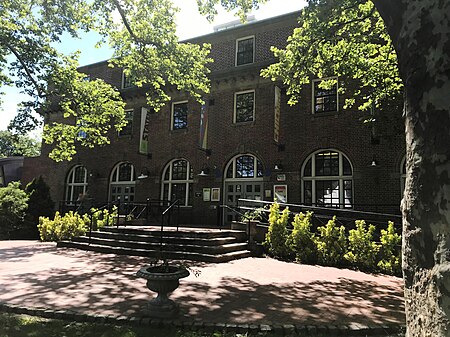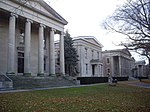Staten Island Children's Museum
Children's museums in New York CityMuseums established in 1976Museums in Staten IslandSailors' Snug Harbor

The Staten Island Children's Museum is a children's museum on the grounds of Sailors' Snug Harbor on Staten Island, New York. The museum opened in 1976 following community and government support for the project. The museum stresses a hands-on interactive approach to its exhibits. A large metal sculpture of a praying mantis, named Francis the Praying Mantis, is located in front of the museum.
Excerpt from the Wikipedia article Staten Island Children's Museum (License: CC BY-SA 3.0, Authors, Images).Staten Island Children's Museum
Cottage Road, New York Staten Island
Geographical coordinates (GPS) Address Nearby Places Show on map
Geographical coordinates (GPS)
| Latitude | Longitude |
|---|---|
| N 40.64111 ° | E -74.10305 ° |
Address
South Meadow Stage
Cottage Road
10301 New York, Staten Island
New York, United States
Open on Google Maps









